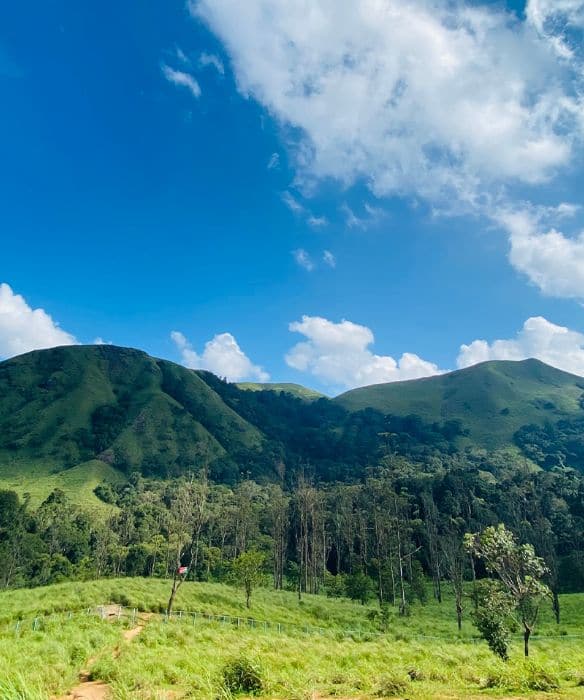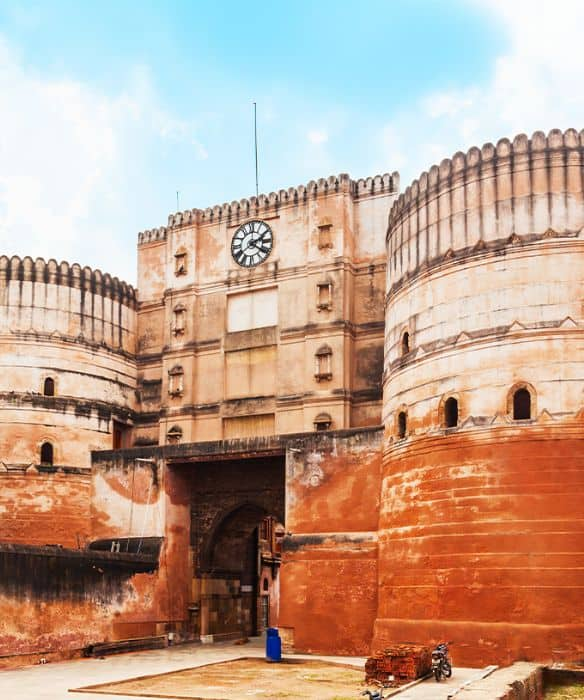Stay logged in to proceed with bookings, orders and offers.
On changing the terminal, you will loose items in your cart. Are you sure you want to change your terminal?
Sparkling seas & sands, Party scenes, Is this what Goa is? Wait, there’s more to India’s beach retreat!
Think Goa and what comes to mind is lazing around in chic resorts, soaking in the sun, playing with the sand, and surfing to heart’s content! But little do we know that India’s top party destination is also profoundly rich in culture. The eye-catching structures with their unique architectures are wrapped in intriguing histories.
Goa, once a Portuguese colony,[Rh2] was captured by Afonso de Albuquerque in 1510. In December 1961, the place became independent from Portuguese rule. However, being the main Portuguese base in the East for four and a half centuries[Rh3] the remains of Portuguese culture are dotted across Goa. Panaji, established as the capital of Goa in 1759, is a great place to learn about the Portuguese heritage and their way of life.
Read More
Read Less
My tryst with Goan culture started with a walk past the Latin Quarters. Situated at the base of the Altinho hilltop area, the charm of the place caught me unaware as soon as I set out on a balmy evening walk. Through the cobblestone walkways and quaint cottages, I was instantly transported to the times gone by. In 1986, several churches and convents of Panaji were accorded the honour of the UNESCO heritage site.
While strolling around the erstwhile Portuguese community areas, the beautiful bright-coloured houses looked perfect for creating picture postcards, and I could not stop clicking!
My next stop was Velha Goa[Rh5] Galleria. I chose this place to buy souvenirs. With a great collection of Azulejos, which are types of hand-painted tiles, and ceramic artworks, I found myself spoilt for choices. Here I learnt about Fundação Oriente, a Portuguese delegation that supports their cultural and educational efforts to keep the Portuguese spirit in Goa alive.
I stood spellbound while I am about to step on a large beautiful painted peacock stairway in a heritage colony of the Latin Quarters. After exploring various other Portuguese works, I ended my walk in the solitude of St. Sebastian Chapel. [Rh6] It’s a baroque work in pristine white. I paid my tributes and felt a sense of complete peace. According to locals, this chapel is believed to have healing powers!
After this deeply spiritual experience, I pined for some light refreshments and indulged my taste buds at Viva Panjim and 'Rice & Curry' restaurants. It felt like a complete experience of this travel chapter.
Good to know: Look out for interesting nomenclature! Some of the streets are named after important historical dates. For example, ‘Rua 31 de Janeira[Rh7] ’ means January 31. It signifies the date when the Portuguese became independent from Spanish rule.
I headed toward one of the most popular religious tourist spots in Goa.The unique architecture is considered one of the outstanding works in the Baroque style. Dates back to 1594, this marvellous basilica is standing strong through the ravages of time.
As I walked through the hallowed hallways, beautiful light streamed through the coloured glass façade! I looked up at the altar of the Holy Trinity. God as a whole with these three parts is central to Christian belief. A sense of pious bliss engulfed me as I was beholding the statue of St. Ignatius Loyola overlooking baby Jesus. Looking at the medallion with the inscribed letters "HIS" filled me with a mystical feeling.
I was curious and wanted to learn more about the well-preserved mortal remains of St. Francis Xavier, who was believed to have great healing powers. The almost undecomposed body of the saint is known to be not chemically preserved and was available for partial viewing. It is exposed to the public every 10 years. After visiting this sanctum, I felt serene.
Good to Know: Visiting hours are 9 am – 5 pm Mon-Sat and 10:30 am to 5 pm on Sundays.
One of the largest churches in Goa, a visit to the 16th century Se Cathedral in south Goa took me back in time. The structure was built to commemorate the victory of the Portuguese under the rule of Afonso de Albuquerque over a Muslim army. The cathedral is dedicated to a lady called Catherine of Alexandria, a Christian Saint who was martyred at the hands of the pagan roman emperor Maxentius.
This magnificent structure with its white walls and tall façade dazzled in the bright sunlight. What a moment for a perfect postcard! Captured all I could of this great architectural work of Gothic-Portugese influence.
I was moved by the peaceful environment and spent some time soaking in the silence of the ‘Cross of Miracles’ chapel. My spiritual reverie was broken with the chimes of the Golden Bell[Rh10], famous for its rich tone!
I decided to go off the beaten path! The lesser-travelled roads took me to the ancient ruins of South Goa. One of the oldest forts in Goa, Cabo de Rama was captured in the 1760s by the Portuguese from the control of the Raja of Soonda. The name of the fort is given after Ram, the king of Ayodhya, who, while in exile, is known to have stayed here with his wife Sita.
Before the Portuguese, the fort went under the control of many Hindu and Muslim rulers. The Portuguese rulers transformed the place into a strong military bastion with artilleries, barracks, and a commander’s quarter. They also built a chapel named Saint Antonio.
As I walked through these ruins that were partly covered under weeds, I dwelled upon how time changes places.
After a restorative walk around the fort, I settled in a secluded space to watch the sun go down! The gorgeous hues of the sunset calmed my mind.
Good to know: The Fort is perched atop a hill, between the beaches of Cavelossim, and Agonda, so plan an afternoon outing and end with perfect sunset views!
What an opportunity to experience Goan village life! I took a detour to see the countryside and visited the Ancestral Goa tourist complex! Close to the famous Big Foot museum, this tourist villa is part of a 250 years old Portuguese mansion [Rh12] Casa Araujo Alvares which was named after a prominent lawyer, Eufemiano Araujo Alvares[Rh13].
What got me hooked to this place was its ‘sound and light show’ that was an audio-visual presentation of its history. A thoughtfully created storyline along with great visual effects brought alive the Portuguese way of life. As I roamed through the mansion, I felt stepped back in time. The light and sound guiding through each richly decorated room along with life-sized human replicas placed around the mansion create a wonderful experience. The prayer room with more than thousands of photos depicting Jesus in his many splendours and amazing idols of Lord Ganesh took my breath away!
To finish off my Goan sojourn, I wished to get as much knowledge of the place as possible without having to travel far. So, the Ancestral Goa Museum was a perfect choice. The name ‘Big Foot’ originated from tales about a huge footprint that is said to be of a holy man named Mahadar and its power of blessings for the believers.
The museum is a miniature of a century-old Goan village. I found a complete rural set-up with statues of farmers, fisherwomen, soldiers, legends, and many others spread throughout the area. I spent more time admiring a statue of Mirabai made by the museum owner MJA Alvares, which is mentioned in the Limca Book of Records as India’s largest laterite sculpture. This amazing museum is a treasure for learning how these village people lived their lives.
Good to know: The villa is open for visits from 9 am to 5 pm and charges a nominal entry fee.





The Adani One expressly disclaims all liability, direct and indirect, in respect to actions taken or not taken based on any or all the contents of this Blog. The Blog is an opinion of the contributor based on the collation of data from various sources and is provided only for information purpose. Adani One does not canvass, advertise, solicit, invite or induct for any product, merchandise, information, brand or any other materials mentioned in the Blog, nor does it obtain any monetary benefit from the same. Reader is advised to read and apply his/her intellect and discretion in this regard. Any Intellectual Property mentioned in this blog belongs to the rightful owner. We do not intent to claim any interest over the same.